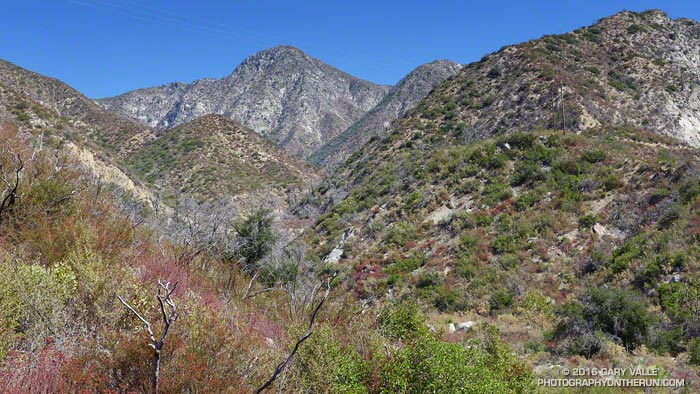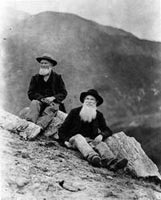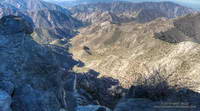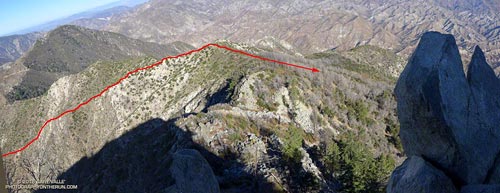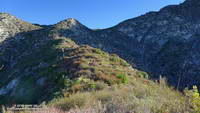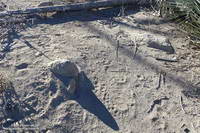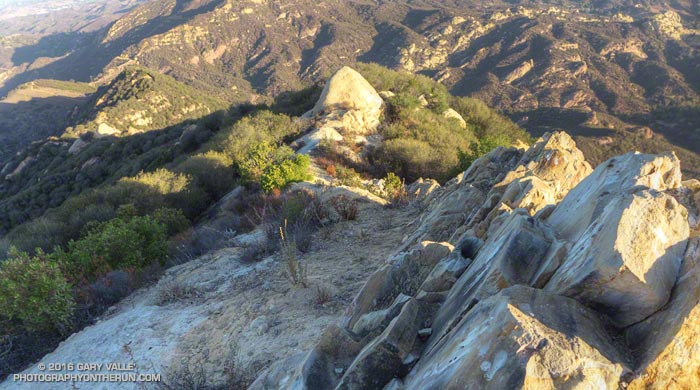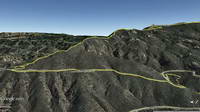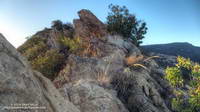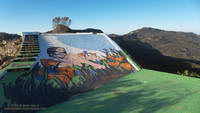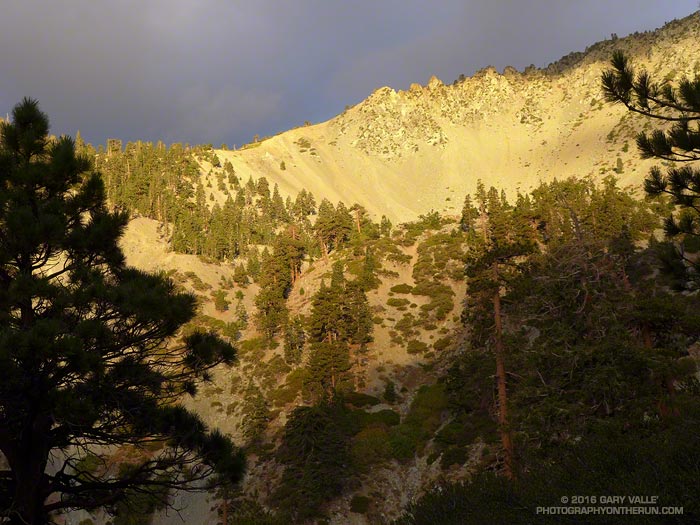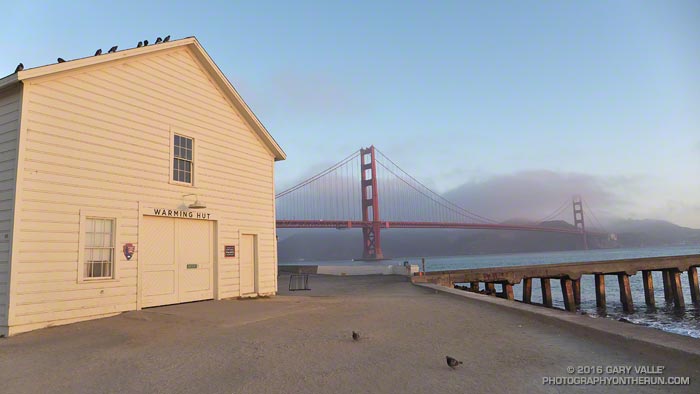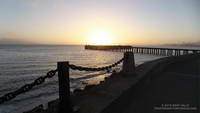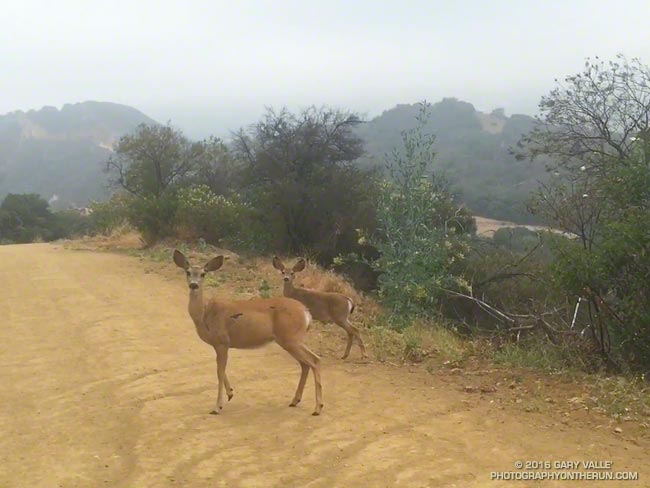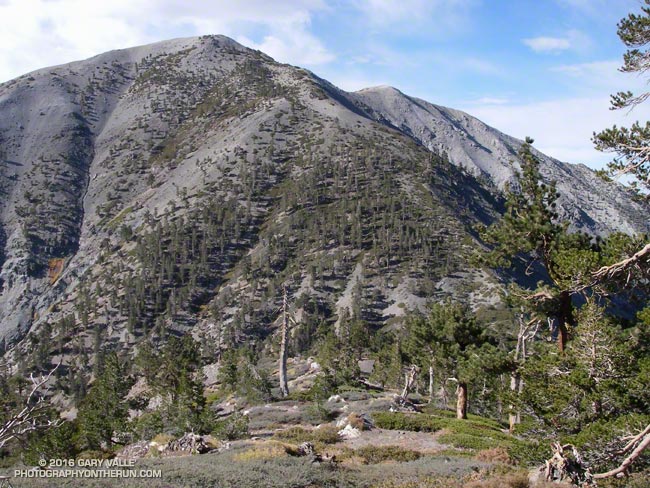
What would you think of a 44 mile trail race with 10,000’+ of gain that climbs Mt. Baden-Powell… and Mt. Baldy… by the North Backbone Trail… at night… by the light of a full moon… with the requirement to carry 10 percent of your body weight, NOT including the additional weight of food and water?
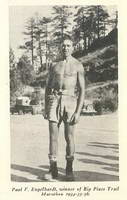
The Big Pines Trail Marathon was first run on August 23-24, 1934. Based on the description in the Autumn 1934 edition of Trails Magazine, the course would rank high among the toughest mountain courses we run today.
“Starting at Jackson Lake at an elevation of 6,000 feet, it leads over the Blue Ridge Range at 7,800 feet, down to the Big Rock-Vincent Gulch divide, 6,500 feet, up 4 miles by 38 switchbacks to the summit of Mt. Baden-Powell, 9,389 feet, back to the head of Big Rock, and east along the summit of Blue Ridge, over Lookout Peak, 8,505 feet, east over Wright Mountain to the Prairie Fork-Lytle Creek divide at 7,800 feet, over Pine Mountain, 9,661 feet, and Mt. Dawson, 9,551 feet, to the summit of Mt. San Antonio, 10,080 feet. Turning back here, crossing again the saddle at the head of Lytle Creek to the Oak Canyon trail, down through Wrightwood and up to Big Pines Park, where the finish line is at the Davidson Arch, elevation 6,864 feet.”
The winner of the inaugural 41 mile race was 24 year old Paul V. Engelhart, an Assistant Scout Master, in 14 hours, 45 minutes, 15 seconds. Second place went to 17 year old Fairfax High School track team member Bain J. Bain in 14 hours, 48 minutes.
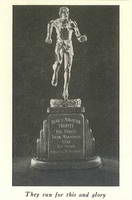
In 1935 the Start was moved to coincide with the Finish at Davidson Arch, increasing the mileage to 44 miles. According to the Trails Magazine report, the race began at 5 p.m., the seven contestants starting at 10-minute intervals.
“This year’s preparations were most complete with nine checking stations, four of which checked two ways, and patrol cars covering all roads which closely paralleled the course for 18 miles. At Guffey Camp, which the contestants passed twice, at 24 miles and 38 miles, there was a field hospital station with a doctor in constant attendance, and on the summit of Mt. San Antonio, 10,000 feet in the air and 32 miles from the start, a four man team from the First Aid and Rescue Division, Disaster Unit, Alhambra Red Cross…”
Engelhardt won again in 1935 in a time of 13 hours and 32 minutes and for the third time in 1936 in a time of 13 hours and 13 minutes. In the Fourth Annual event in 1937 Engelhardt’s record for the 44 mile course was broken by Ray Ebel, who finished in a time of 13 hours 3 minutes.
“In this year’s race, as in those that have gone before, it was decidedly demonstrated that a thorough knowledge of the course is essential to win or even to finish. Of the four who passed Pine Mountain, three were off the course at some point, two of them seriously.”
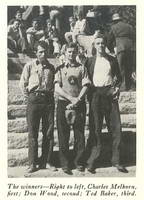
Perhaps in an effort to make the course more straightforward, it was changed for the Fifth Annual race in 1938. Instead of returning from Mt. Baden-Powell and climbing Mt. Baldy via the North Backbone trail, the course continued west along the route of the present day Pacific Crest Trail (and AC100) to Windy Gap. At Windy Gap (then called Islip Saddle) the course descended to Crystal Lake Recreation Camp, turning around at the Ranger Headquarters for the 20 mile return to the Finish at Big Pines.
“It was a wild night on the mountain top, with winter temperatures and a gale of wind, a night which will be long remembered by both the contestants and those in charge of the checking and radio stations. Out of thirteen starters only six finished…”
Even in bad weather, the new forty mile course was more runnable and faster-paced. The report in Trails Magazine describes a competitive race that Big Pines Ski Club member Charles Melhorn won in 9 hours and 23 minutes — just 17 minutes ahead of Marine Reservist Don Wood. That works out to an average pace of 14 min/mile, with much of the running at night!

